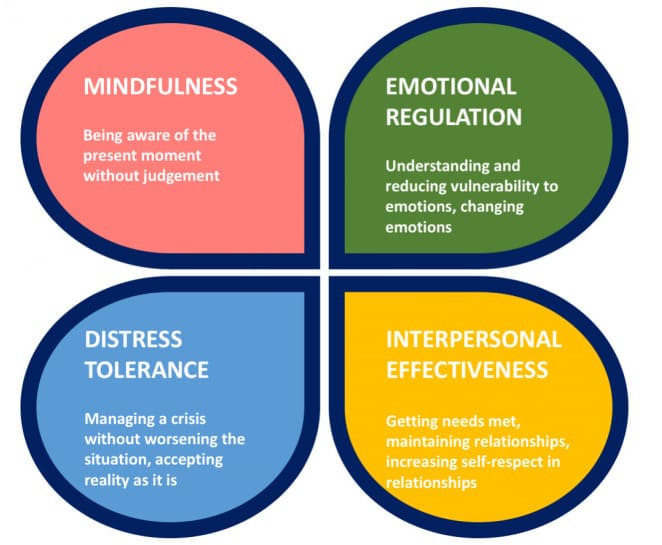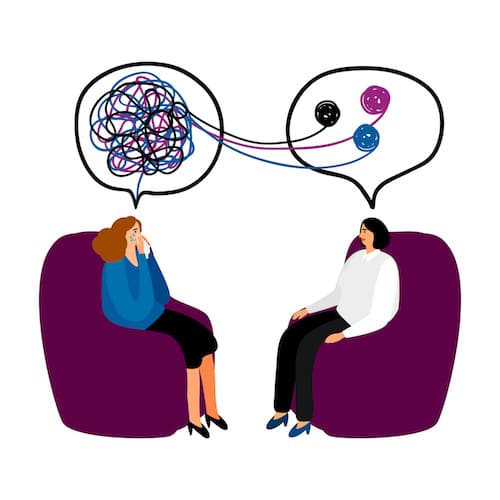Welcome to the world of Dialectical Behavior Therapy (DBT). Originally developed in the late 1980s by Dr. Marsha Linehan for people who felt like life was an unrelenting emotional rollercoaster, DBT has since grown into a widely respected form of therapy that’s as useful for learning emotional resilience as it is for navigating life’s trickiest relationships. I’ve personally been doing DBT therapy for years now, and while I’m not completely healed, it has helped me immensely in my daily struggles. Let’s take a dive into what makes DBT such a wise, witty, and wonderfully effective approach to mental health.
DBT 101: What Exactly Is Dialectical Behavior Therapy?
Dialectical Behavior Therapy combines the terms “dialectical” and “behavioral”, which may sound intimidating but is actually quite simple at its core. The “dialectical” part refers to balancing two seemingly opposite concepts: “acceptance” and “change”. Imagine you’re trying to climb a hill, but it’s raining, you’re exhausted, and the view doesn’t even look all that promising. DBT encourages you to accept these struggles while also motivating you to keep climbing. Instead of drowning in “why me?” DBT teaches you how to build mental strength, acceptance, and change in harmony.
So, DBT is all about finding this balance, offering a middle path between “I have to change everything about myself right now” and “I’m a lost cause.” This approach has proven to be highly effective for people dealing with intense emotions, as it equips them with skills to manage emotional chaos and build more fulfilling lives.
The Four Pillars of DBT
DBT is like the Swiss Army knife of therapies—loaded with tools that fall into four main skill categories. Each one is designed to help you not just survive but thrive in the face of life’s challenges:
- Mindfulness – This is where it all starts. Think of mindfulness as the antidote to autopilot. DBT encourages you to practice being fully present in the moment—aware, engaged, and non-judgmental. Mindfulness is like the brakes for your brain, giving you the power to stop, observe, and act intentionally instead of reacting emotionally.
- Distress Tolerance – Imagine you’re caught in a sudden storm (or traffic jam, or Monday meeting). Distress tolerance skills are designed to help you tolerate emotional pain and avoid impulsive reactions. Instead of screaming into the void (tempting though it may be), DBT encourages techniques like self-soothing, distraction, and “radical acceptance” to help you weather the storm without making it worse.
- Emotion Regulation – Feelings: they’re intense, unpredictable, and sometimes overwhelming. Emotion regulation skills teach you how to understand, label, and manage emotions. This doesn’t mean bottling them up; it means learning to navigate feelings so that they don’t control you. Want to learn how to get out of a bad mood without a six-month stay in Angerland? This skill set is your map.
- Interpersonal Effectiveness – This is all about getting what you want (in a healthy way) and setting boundaries without burning bridges. Need to say “no” but dread the fallout? Or want to express how you feel without escalating into a full-blown argument? DBT’s interpersonal skills help you stand up for yourself, listen to others, and build stronger relationships.
The Skills and Techniques of DBT
DBT’s techniques are where things get interesting—and surprisingly practical. Here are a few fan favorites:
– STOP Technique – This one’s a classic. When you feel an emotional tidal wave coming, DBT says, “STOP.” Literally. Stop what you’re doing, Take a step back, Observe your surroundings and your feelings, and Proceed mindfully. It’s the “deep breath” of therapy, with some added structure.
– Wise Mind – One of DBT’s favorite terms, Wise Mind is that sweet spot between your Rational Mind and Emotional Mind tornado. Wise Mind is about integrating logic and feeling to make balanced decisions that you won’t regret in the morning.
– DEAR MAN– It’s an acronym to help with assertive communication: Describe, Express, Assert, Reinforce, stay Mindful, Appear confident, and Negotiate. Perfect for difficult conversations when your goal is to get what you want without turning things into an interpersonal tug-of-war.
– Opposite Action – Feel like shutting down? DBT says, try the opposite. If your instinct is to withdraw, try connecting with a friend instead. Opposite Action is about using action to shift your mood and break free from negative patterns.
Who Benefits Most from DBT?
Originally, DBT was developed for people with Borderline Personality Disorder (BPD), a condition marked by intense emotional responses, impulsivity, and relationship challenges. But over the years, DBT has proved so versatile that it’s now used to treat a variety of conditions, including:
– Bipolar Disorder
– Anxiety Disorders
– Depression
– Substance Use Disorders
– Eating Disorders
– PTSD
DBT is especially valuable for people who struggle with emotional regulation and find that their feelings lead to behaviors that hurt themselves or their relationships. It’s a life preserver for anyone who feels like they’re constantly treading emotional water, helping them find solid ground.
The Verdict on DBT: Is It Worth the Hype?
In a word, yes. DBT is as much a philosophy as it is a therapy. It doesn’t promise a cure or a magic solution, but it offers a toolkit—a way of approaching life that’s both profoundly practical and refreshingly humane. In a world that often tells us to “stay positive” and “move on,” DBT’s approach of balance feels like a revelation. It gives us permission to feel deeply and respond wisely, to change without rejecting ourselves.
DBT won’t eliminate every storm in your life, but it will teach you how to navigate the weather with a clear head and a steady hand. In the wise words of Dr. Linehan herself, “You’re doing the best you can, and you can do better.” And the goal of it all? Is to “Building a life worth living”.




